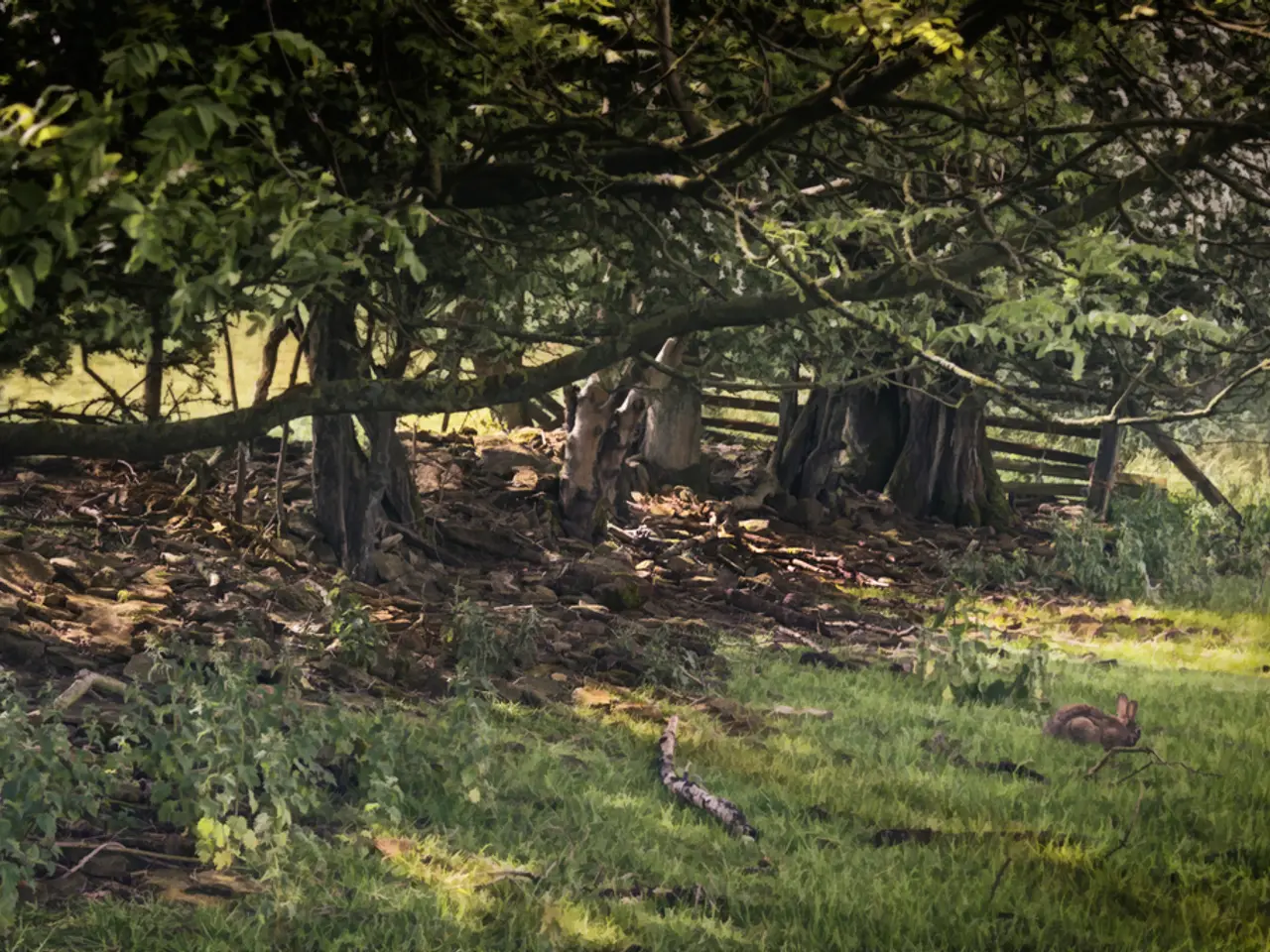Effortless and Intelligent Gardening Method: Maximize your Yield with Minimal Labor
=========================================================================
No-dig gardening is an easy, sustainable way to cultivate a thriving garden that works with nature, not against it. This innovative method is gaining popularity among gardeners who value a low-effort approach to gardening while still achieving bountiful harvests.
To start a no-dig garden, you begin by layering organic materials on top of the soil rather than turning or breaking it up. The basic steps are:
- Choose a site with good sunlight and access to water.
- Clear the area gently without digging, removing any large weeds or grass.
- Lay down a base layer of cardboard or newspaper if needed to suppress weeds.
- Add layers of organic matter like compost, well-rotted manure, and mulch on top of the soil. This builds fertility and improves soil structure over time.
- Plant your seeds or seedlings directly into the layered surface without disturbing the soil below.
- Maintain with mulching and watering regularly but lightly, allowing the soil biology to work naturally.
This approach preserves the natural soil structure and its networks of fungi and microbes, encourages worm activity, retains moisture longer, and reduces weed emergence.
The benefits of no-dig gardening include:
- Improved soil health: preserves microbial networks and encourages natural soil aeration by worms.
- Less labor-intensive: no heavy digging or tilling required.
- Moisture retention: reduces need for frequent watering.
- Weed reduction: minimal soil disturbance prevents dormant weed seeds from sprouting.
- Improved fertility over time: organic layers break down enriching the soil naturally.
- Better plant growth and harvests thanks to stable soil conditions.
No-dig gardening is beginner-friendly, and courses are available for structured guidance, but even casual gardeners can start with simple layering of organic matter and planting directly into the surface. This method works well for both in-ground beds and raised beds.
Patience is key in no-dig gardening, as the soil structure and fertility improve gradually. Gathering enough compost and mulch for no-dig gardening may require some effort upfront, but the long-term benefits of a thriving garden are worth it.
In no-dig gardening, layers of organic matter like compost, straw, and mulch are built right on top of the ground. This creates a thriving ecosystem where earthworms, fungi, and microbes work together to support plant growth naturally. No-dig gardening reduces erosion and keeps nutrients where they belong by keeping the soil stable.
While no-dig gardening fosters strong, resilient plants, it doesn't eliminate garden pests entirely. Gardeners should still be vigilant in monitoring their gardens and addressing any issues that may arise.
In summary, no-dig gardening is a low-effort, sustainable method emphasizing soil health by avoiding disruption and building up organic matter on top instead. This creates a thriving growing environment with less work and better results. Embrace the no-dig gardening method today and join the growing community of gardeners who are making a positive impact on both their gardens and the environment.
- To enhance the soil's organic content and create a better growing environment for plants, consider incorporating compost within your no-dig garden's layers.
- Instead of traditional decor items, opt for gardening tools and accessories that align with your organic and sustainable lifestyle, such as seedlings or pots made from home-and-garden-friendly materials.
- Adopting a no-dig gardening approach means planting seeds directly into the layered soil, ensuring minimal disturbance to the soil ecosystem below.
- As part of your long-term gardening plan, you may want to consider setting aside dedicated spaces in your garden for composting and creating organic matter to further support your no-dig practices.
- No-dig gardening can be easily incorporated into various aspects of your home and lifestyle, from the design of your garden's layout to the choice of seeds and plants you decide to cultivate.




